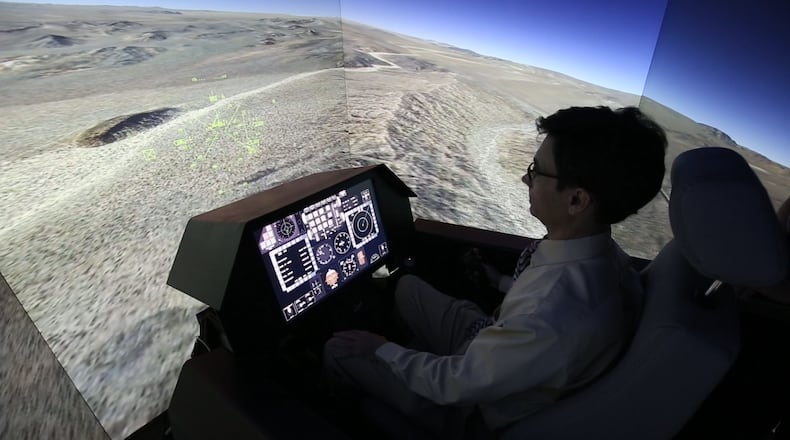“AFRL is evolving the way we do business,” said Ryan Helbach, who introduced himself to his Sinclair Community College audience as the AFRL “chief intrapreneur.”
RELATED: More than 3,400 new jobs committed to Dayton region
That renewed outreach to local businesses may soon include a new downtown Dayton home for the Wright Brothers Institute, an organization that often serves as a bridge between the Air Force and civilian thinkers and doers who help the branch solve problems.
RELATED: AFRL, Ohio to invest $5M in drone technology at Springfield airport
The organization is considering space on Second Street, once used in a larger way by the University of Dayton Research Institute.
“There’s nothing definitive yet,” Helbach said about naming a proposed downtown location.
In a LinkedIn essay this week, Jennie Hempstead, graphics innovation lead at the Wright Brothers Institute, said her organization is researching ways to work downtown.
“One proposed solution positions AFRL as the anchor of an innovation district,” Hempstead wrote. “Innovation districts are defined as ‘geographic areas’ where anchor institutions and companies cluster and connect with start-ups, business incubators and accelerators.”
RELATED: AFRL to use up to $4.1M to identify technology for commercial use
With a $4 billion annual budget, AFRL and its more than 5,700 Ohio employees spend more than $200 million in Ohio, with most of that going to the Dayton region, Helbach said.
SOCIAL MEDIA: Follow Business Writer Thomas Gnau on Twitter.
Some $12.5 million of that goes to Ohio academia, with about $229 million going to small businesses and another $230 million going to industry in the state, according to numbers Helbach presented.
“The Air Force doesn’t produce its own products,” said Emily Fehrman Cory, director of the AFRL Maker Hub. “We rely on manufacturing to do that.”
Helbach encouraged his listeners to get their businesses and organizations identified on the web site , DaytonTechGuide.com, an Internet haven for local small tech start-ups.
“That’s really going to be the front door for anyone looking to engage with the (Dayton small business) ecosystem,” Helbach said.
Mitch Heaton, vice president of economic development for the Dayton Development Coalition, encouraged the audience to spread the word about AFRL efforts, saying everyone in the room had a development role.
“We’re the connectors,” Heaton said.
About the Author
